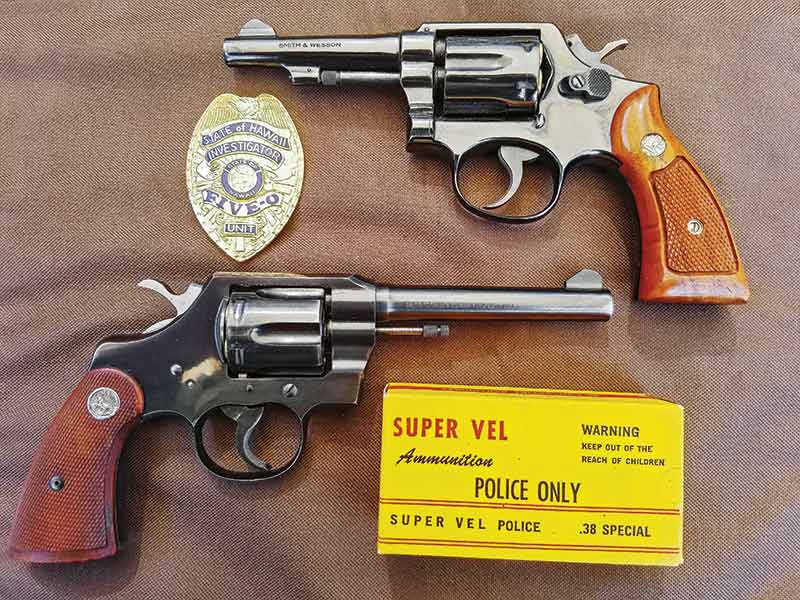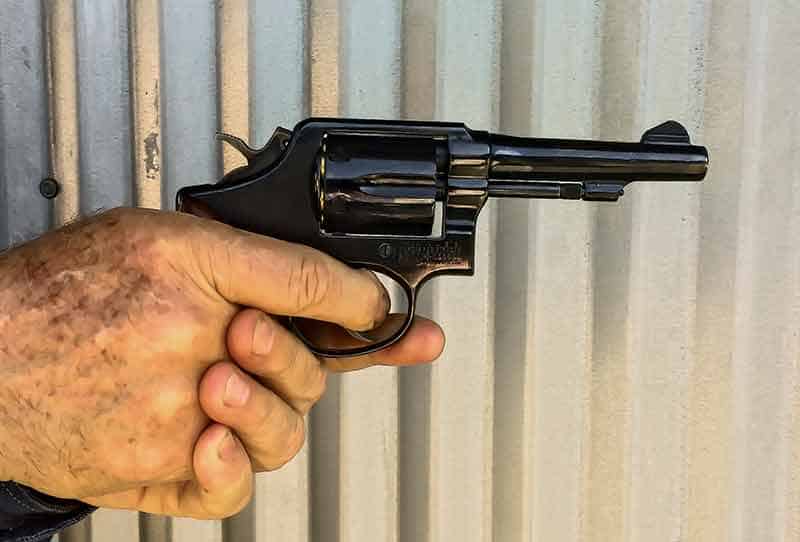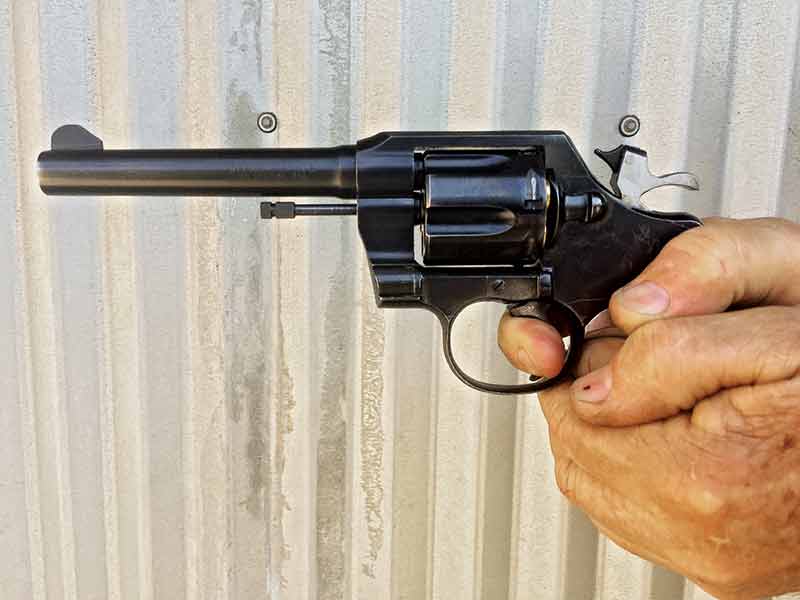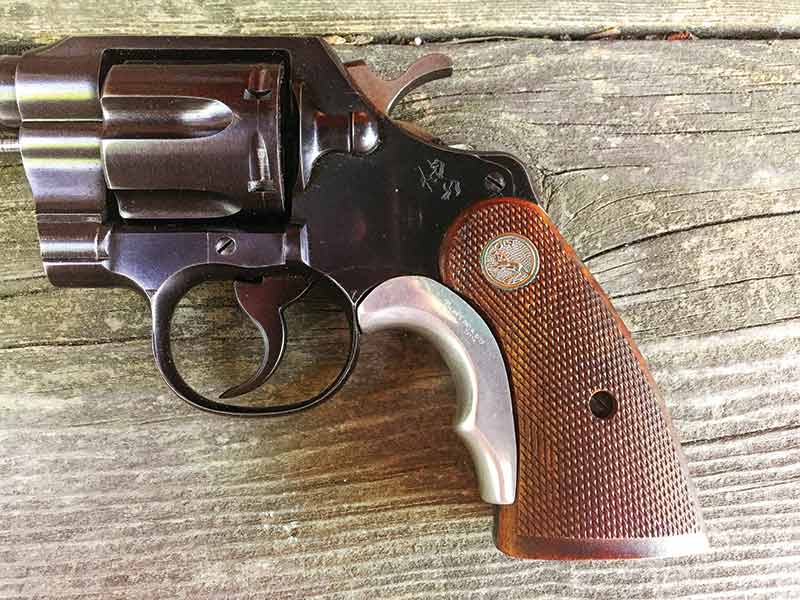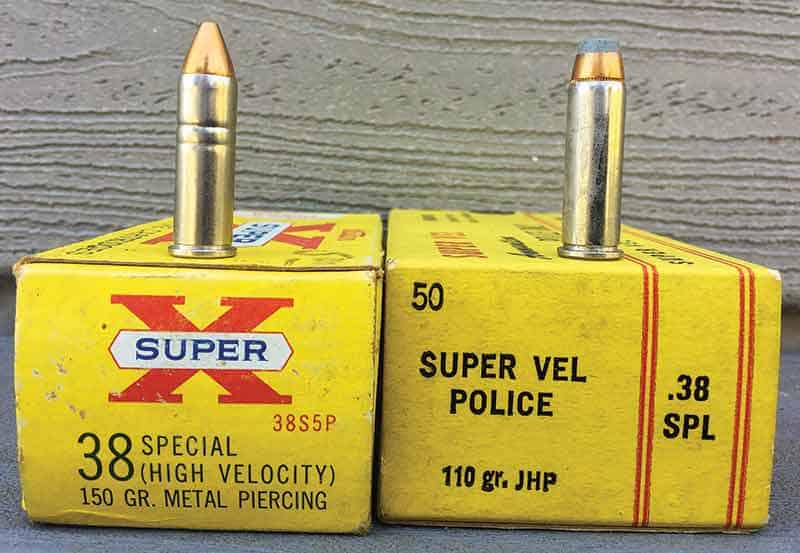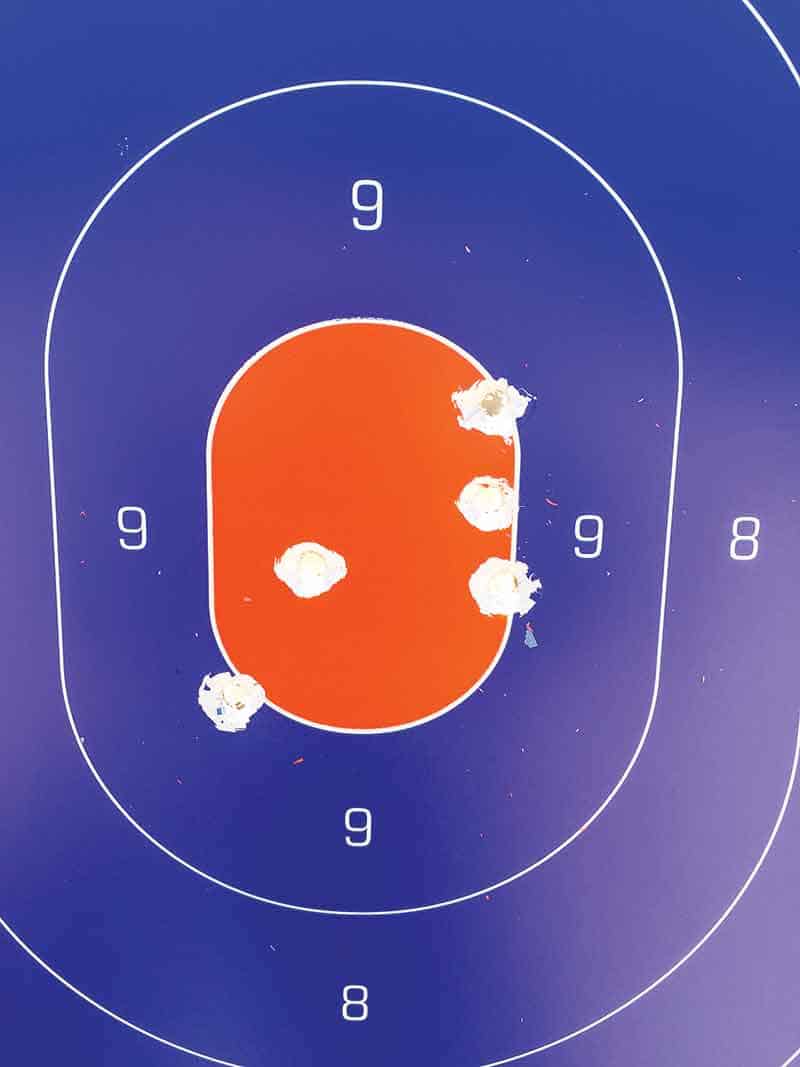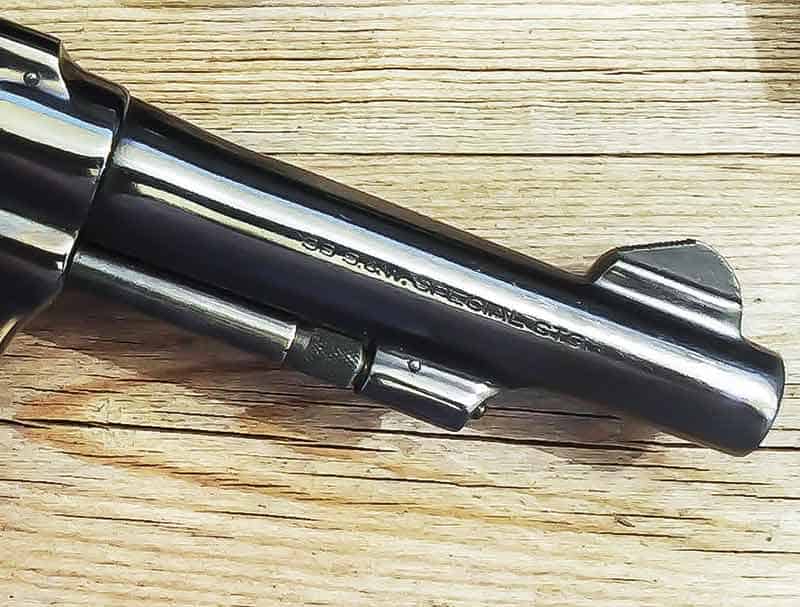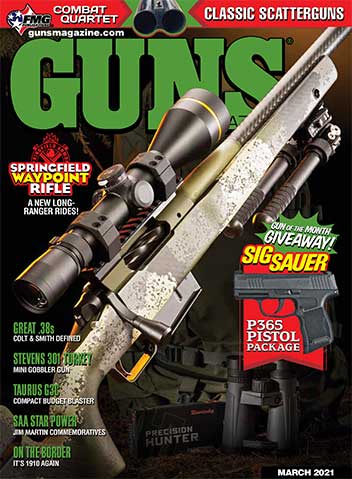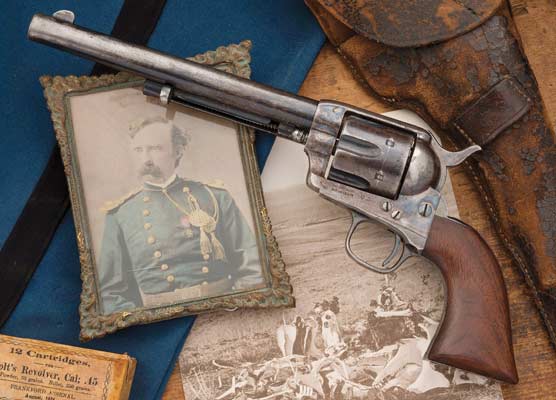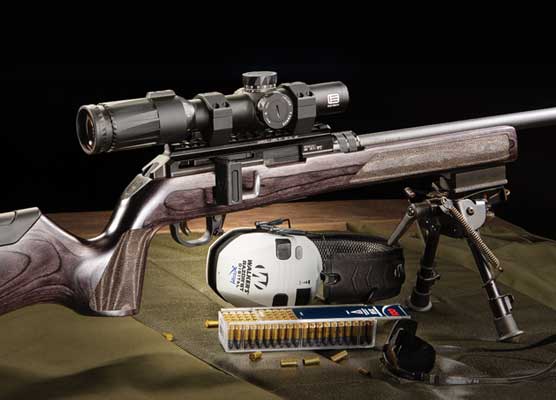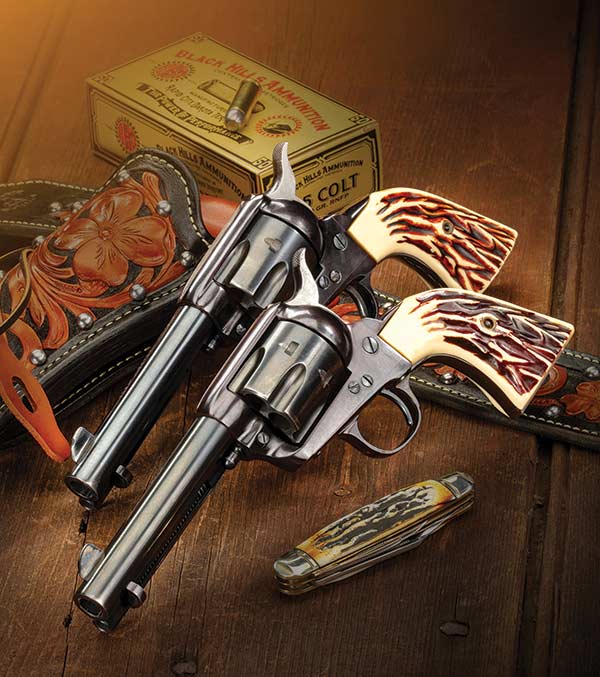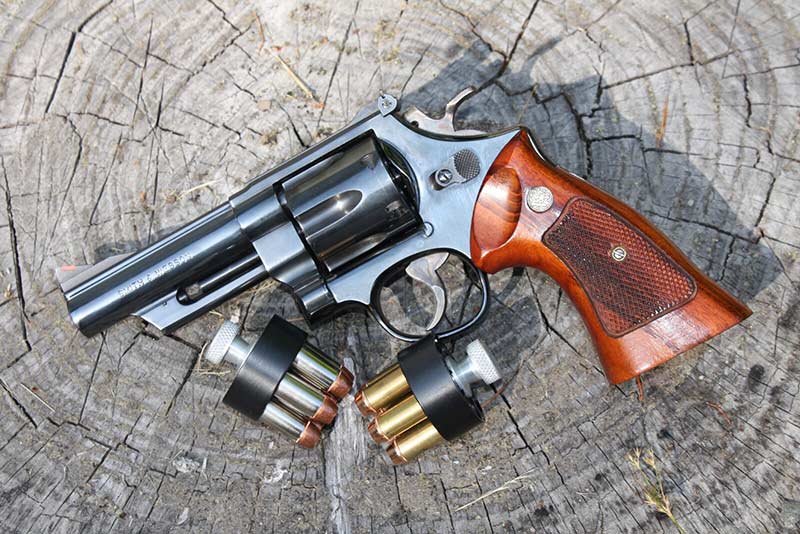Colt Official Police And
S&W Model 10
The Great .38s — two sides of the same coin
Long before cops shifted to auto-pistols, there was a time — a fairly long time — when the LE market was dominated by the humble .38 caliber double-action revolver. The old “Best Brand/Model” debate has kept shooters energized for generations but none of them were any more sharply focused than Colt vs. Smith & Wesson.
We’re talking “primary sidearm” here, not just as a backup or small-frame plainclothes tool. While the era of the service revolver has (sadly) passed, the shelf life of a good medium-frame wheelgun is a long one. This means there are a lot of mighty fine duty-grade .38s out there in gun shops, not to mention private collections.
Top-Tier Two
If anyone ever asked me to pick the two .38 Special service revolvers epitomizing the struggle for primacy in the LE market, they would have to be Colt’s Official Police (OP) and Smith & Wesson’s Model 10.
Neither sprung fully formed “as is.” The Official Police’s manufacturing run was a lengthy one from 1908 to 1969. It began as the Army Special, but was “deluxified” in 1927 and christened the “Official Police.” The final three years of its run saw the original format altered to the Mk III line (in essence, a different gun), which never achieved the success or cachet of the original. By 1970, Colt had made 400,000 Ops — a whole lot of Colt anythings.
The Model 10 was the culmination of S&W’s original M&P series. It only became the Model 10 in 1957 when Smith went to numbers. In 1968, the Model 10 listed for $76.50 (blued). The weight, in 4″ trim was 30.5 oz. My specimen is a “10-5,” made in 1972 by the numbers. Still early enough to enjoy beautiful bluing, Magna grips, and a pinned barrel.
The Colt Official Police was a bit pricier circa 1968 — $110 blued and slightly heavier because it was built on Colt’s .41 caliber frame (35 oz. in 4″). For a steeper price tag, of course, either could be had in nickel. The OP shown here is a 1958-vintage 5″ model, not quite as minty as the Smith.
Both guns feature a hammer-mounted firing pin, square checkered-walnut butt, and, in deference to their service roles, fixed sights. Adjustables were for sporting/target revolvers and made more sense on guns with .357 Magnum capability, considering the larger range in velocities and resulting shifts in point of impact.
Plain vanilla .38 Specials generally employed a 158-grain bullet with an initial velocity of 800–900 fps but there were a couple of hotshot invigorated options, of course. Magnums were not universally adopted but if they were, many agencies required them to be loaded with .38 Specials as controllability, overpenetration and a shortened service life were all factors to be considered — not to mention the PR controversies associated with magnum loadings.
Compare And Contrast
The Smith and the Colt, in terms of operation — loading, unloading, etc. — are similar enough only subjective preference comes into play. However, in terms of differences, there are several.
Model 10: Semi-shrouded ejector rod, push-to-open cylinder release latch and counter-clockwise rotation. Skinny “pencil barrel.” Official Police: Naked ejector rod, pull to open cylinder release latch, left to right rotation.
Looking to the loud end, the 4″ barrel of our M10 mic’d .660 at the rear to .539 at the front, a more substantive taper than the OP’s .660 to .603. The front sight width of both guns was an easy-to-acquire and reasonably glare-resistant serrated 1/8″.
The Smith lived up to its reputation for a shorter, more manageable double-action trigger pull at 10 lbs., while the Colt, although measurably lighter at 9 lbs., was significantly longer and “stagier.” Both single-action pulls were dreamy, with the Smith at 2.5 lbs. and the Colt at 2.75 lbs. and both are practically target-grade crisp.
The Winner
So what was the reason for Smith M10’s (and the related medium-framed M15 and M19) eventual primacy in the LE market? Well, there was the cost per unit difference. Although the actual MSRP differential in 1968 was around 34 bucks, shelling out an additional 65 bucks over the OP’s asking price would get you a Python! Then there was the fact the M10’s grip was more user-friendly across a broader spectrum of hand sizes.
I’ve wound up sticking a Tyler T-grip adapter on nearly every ’50s to mid-’60s Colt I’ve ever used. The exception? The Python — but I haven’t ever been wealthy enough to own enough of them to worry about!
Aside from these reasons, I’m pretty certain Smith just did a better job of marketing their revolvers to the LE community. Colt was heavily occupied with the AR15/M16, Peacemaker and Government Model. Their DA revolvers, prestigious as they may have been, were simply sucking up too much money. Although the OP wasn’t as expensive to make as say, a Python, it was still a fairly pricey item.
Then there was the signature naked ejector rod on the OP. Perhaps some PDs were leery of timing and alignment issues should some patrolman damage his while attempting to use his OP as a club.
Range Time
We shot both guns with three loads in keeping with the vintage aspect of the whole project. The first was a pretty close approximation of the maligned 158-grain lead RN service cartridge — Black Hills’ excellent Cowboy Action load. The other two were sexier and rarer but high on the cool factor.
The first was from a cherished box of the original Super-Vel Police 110-grain JHP we decided to sacrifice in the interests of ballistic curiosity. This was a noisy little beast, clocking just over 1,200 fps from the 5″ Colt and just under 1,185 from the 4″ Smith. It printed low at 25 yards and results — while certainly service-gun adequate — was not match-grade from either gun.
The second was Winchester-Western’s long-defunct but very interesting pointed 150-grain Hi-Velocity Metal Piercing load. This one clocked just over 1,000 fps from the Colt and just under 970 from the Smith. Accuracy at 25 yards was excellent from the Colt and more than acceptable from the Smith.
Nothing changes the fact the Smith product eventually outlasted Colt’s. Today, S&W’s catalog lists a still-impressive array of revolvers. The K-Frame models coming along (and in some cases, gone) in the last 50 years — Models 15, 19, 13, 14, 66, 65 to name a few — are all essentially Model 10s at their core. The M10 itself, incidentally, still exists in the S&W catalog in 4″ service trim, along with its stainless version, the M64.
Colt, by comparison, is now offering a couple of “throwback” models for the collector/nostalgia segment. But if the Official Police is ever resurrected, it’s unlikely to be in its classic format.
Choices To Make
So who’d pick which of these two specimens and for what purpose? As a double-action defensive house gun or carry gun, I’d go with the Model 10. For deliberate single-action recreational shooting, I’d go with the Official Police.
In the interests of participatory democracy, I let shooters of different generations shoot both to give me a bit of feedback.
We’re talking four experienced revolver guys. Three of them went with the Smith M10. But the one “old-school” geezer with a serious background in slow-fire competition in his youth, went with the Colt OP. Either gun served in both capacities admirably during their heyday. Both would continue to do so now.
And although I’m a card-carrying Smith guy these days, if I ever saw a nice used Colt Official Police in any barrel length — 4″, 5″ or 6″ — I’d grab it in a heartbeat.
